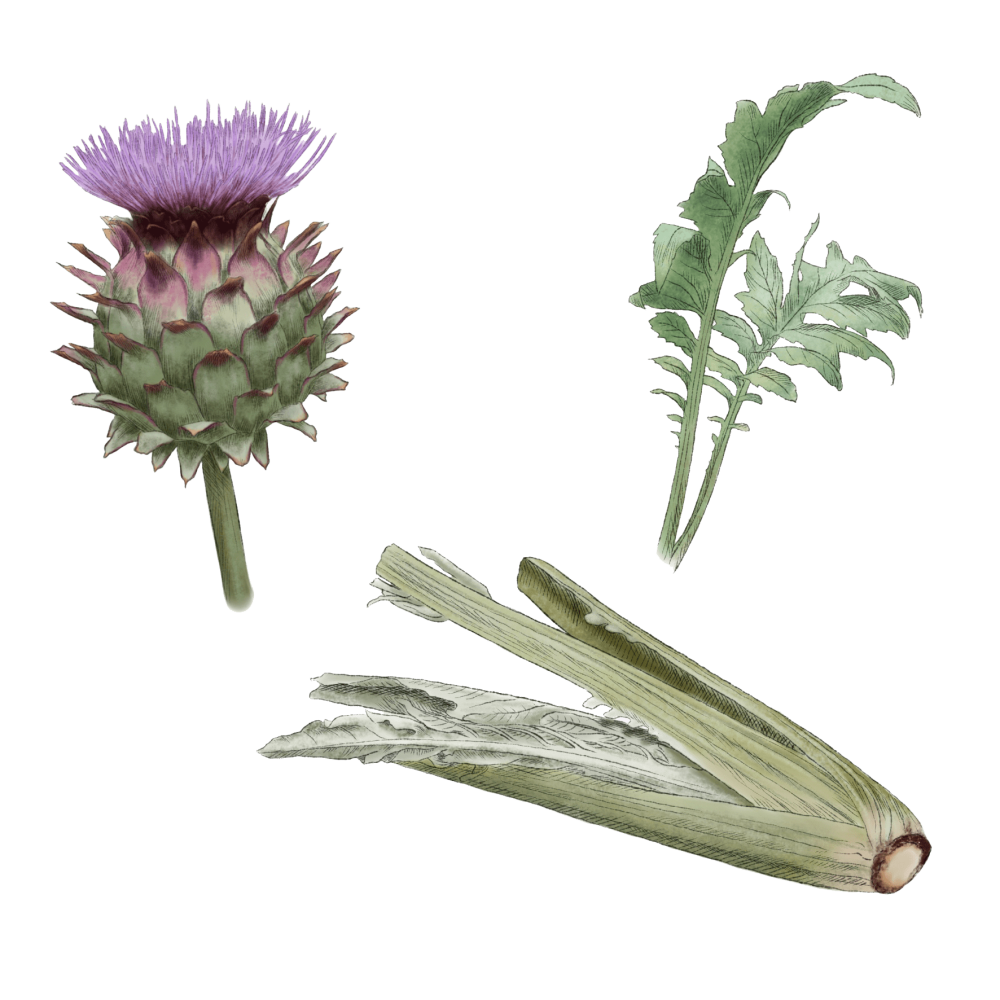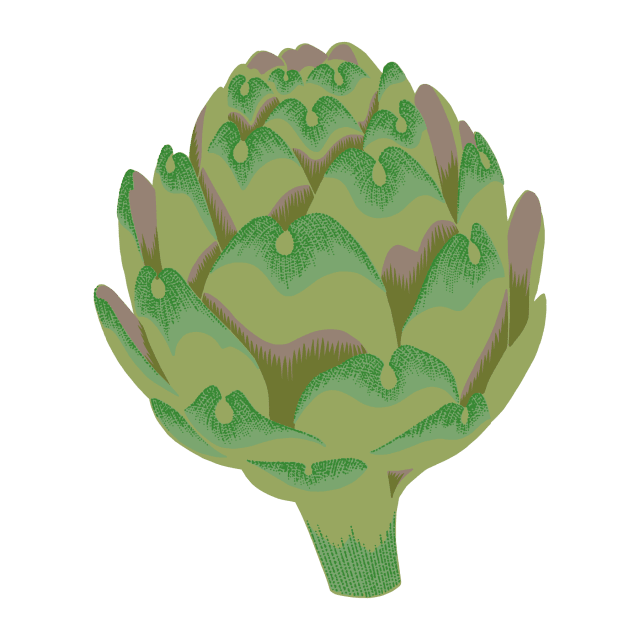Cardoon

Latin name: Cynara cardunculus
Other names: artichoke thistle
Uses: vegetable
What are cardoons?
Cardoons are thorny plants related to thistles (and close cousins of artichokes.). Don’t be deterred by the spines — this daisy family member’s bark is worse than its bite, and its stems are delicious.
Why are cardoons healthy?
Cardoons are rich sources of minerals — calcium, potassium, iron, and magnesium. They also contain polyunsaturated fatty acids and protective phytonutrients like lutein, caffeic acid, and cynarine, which can help reduce LDL (“bad”) cholesterol.
What do cardoons taste like?
Unsurprisingly, cardoons taste like artichokes — they’re two varieties of the same species. Cardoons are slightly bitter (though pleasantly so), grassy, with a green flavor similar to asparagus or celery. They’re ribbed like celery, too, but lack celery’s fibrous strings.
How do I use cardoons?
Like artichoke hearts, cardoon stems turn brown pretty quickly once they’re exposed to air, so after you trim them of their tiny prickles, pop them into a bowl of water with a cut lemon as you work, then boil them in salted water until tender before adding them to recipes.
Cardoons have a special affinity for braises and creamy gratins, but also love being breaded and fried. In Italy and Spain they’re traditionally used in winter soups and stews.
What do cardoons pair well with?
Cardoons pair beautifully with other Mediterranean flavors — bay leaves (and other woody herbs), beans, breadcrumbs, lemons, olive oil, sharp cheeses, and other intense, briny flavors (traditionally anchovies, but try olives and capers, too). Their bitterness is complemented by walnuts and black pepper.
Where do cardoons grow?
Cardoons originated in the Mediterranean, where they still grow both wild and as a cultivated plant in Italy, Spain, and southern France. They grow in dry, sunny areas in the wild and are a noxious weed in arid western regions of the United States.
The two main types are “lunghi” and “gobbi.” This pertains to the cultivation style. Gobbi (“hunchback”) cardoons are bent over and mounded with soil to blanch the stems as they grow, which yields a sweeter product than the straight-growing (and more bitter) lunghi (“long”).
How to buy cardoons:
Look for cardoons in specialty markets and farmers’ markets from around November to February. Although you can store them for up to a week (loosely wrapped in a plastic bag, stashed in the crisper drawer) you should use them as soon as possible, as they become difficult to peel when they’re wilted.
Fun cardoon fact:
Whereas rennet usually comes from the lining of a calf’s stomach, cardoons are a source of vegetable rennet that can be used for making vegetarian cheeses. The pistils (male parts) of cardoon flowers are used in making a few regional sheep’s milk cheeses in Spain and Portugal, such as Torta de la Serena and Queijo de Nisa.




